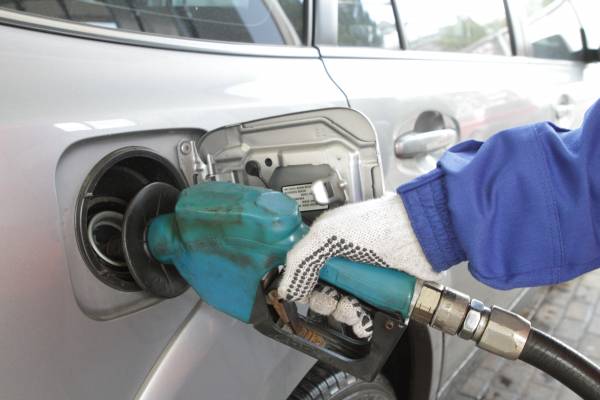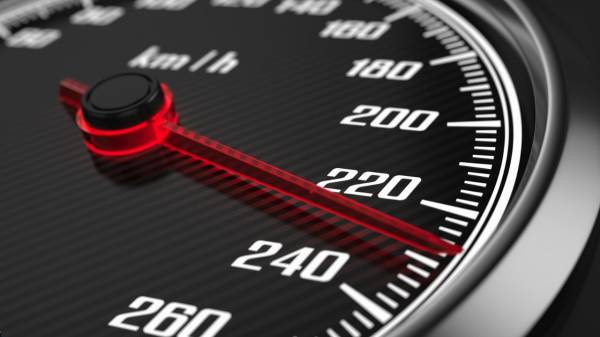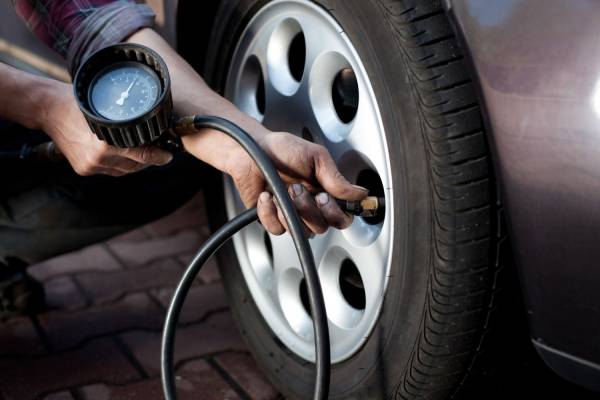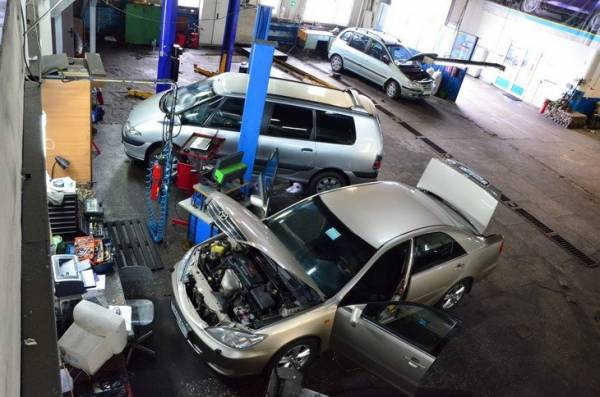
From the beginning, the price tags at the gas station “gained” on average to 55 cents. Experts ‘ forecasts are disappointing: the fuel for cars will continue to go up. By the summer the price of the popular 95-octane may be more than 30 UAH, approximately the same will cost a premium diesel. All depends on the price of oil and exchange rate of hryvnia. “Assuming that oil will cost $65-70 per barrel, and the hryvnia will weaken to at least 5% of the price tags at the gas station can be up to 30 UAH per liter of gasoline,” — says the member of the Supervisory Board of the Institute of energy strategies Yuri Korolchuk. “To feed” the iron horse have now is expensive, so owners have begun to pay more attention to fuel consumption. Someone compares the appetite of your car with the passport issue, someone consults with the owners of similar machines, I’ll stand by you one HUNDRED, suspecting a problem under the hood. In fact, the first cause of extravagance auto experts call as “feed”, ie fuel. In second place — the manner of driving the third drive mode. Collectively, these factors can make the fuel consumption by 40-60% higher than the neighbor on the same car.
WHETHER A CAR IS “EATING” MORE: HOW TO DETERMINE THE FLOW RATE
If in one not too fine day you decide that your car eats more than is necessary, first determine what was the basis for such a conclusion. Some just come across the figures of the passport of fuel consumption and horrified to calculate the difference. It may be different drivers from two to three to ten liters per 100 km. So if we are talking about a few liters is not a basis to accuse the car of gluttony. “The fact that the automaker makes the measurement of fuel consumption under ideal conditions, — explains the Director of SRT “AUTOCOMP SERVIS LTD” Ruslan Kulagin. — On a special stand, with the help of automation, without driver, without loads of extra equipment (air conditioning, headlights) fully functional car, which filled the reference fuel, and in the absence of air resistance. This is to ensure that the obtained results could be readily confirmed by similar tests. These data allow us to objectively compare cars from different manufacturers. But in real terms they may not be practical norms, operational expenses”.
Also it is impossible to judge the appetites of the machine on the basis of sharply increased spending on fuel. First, prices are not standing still. Second, you are unlikely to run the car with the same fuel at the same gas station from the same gun. To make any conclusions, we need to very accurately determine fuel consumption in the car. It may take a few days. “The algorithm is as follows — suggests Kulagin. — Pour the filling up to the 1st cut-off gun a full tank. Reset the odometer and rolled more than 100 km (the more km, the more accurate the result). Record the mileage. At the same gas station, preferably the same gun, fill it to the 1st cut-off the fuel tank full and record how many litres went in. Divide the number of gallons recorded on the exact mileage on the odometer, multiply by 100 and get the real fuel consumption of your car on 100 km of run”.

The wear of the car can give a flow rate of 1-2 l more
“Usually, the growth of consumption starts with 5-7%, which in the domestic environment, timely notice is almost impossible, — said the author of the Methods of economic driving of the car Andrey Sidorenko. Something to consider occurs if there is a difference of more than 10%”. This difference must be from your previous indicators and not from the numbers of forums on the Internet. Plays a role even in what period you choose to compare. “There is such a thing as normal wear and tear of the car, which may give consumption to 1-2 liters more. It is an inevitable process: car with a mileage of 70 thousand km will consume less than 150 thousand km”, — stressed the Director of SRT “Karservis” Vladimir Melnik. In all other factors that affect the fuel consumption can be divided into subjective (“human”) and objective (“technical”). Before you spend money for a car, you should try to affect that subject.

The test should be done on the same gas station
THE FASTER YOU GO — THE MORE YOU SPEND
The first number in the list of subjective factors that affect appetite, “horse”, the experts called driving style: according to Sidorenko, irrational style of riding can add to the fuel consumption of 20-25%. But Miller believes that the overuse of cabs can reach 40% or more: “Compare the driver in the patrol car, which would save gasoline, and the youth that goes out under the lights with a squeal of rubber. If you are focused on fuel economy — forget about aggressive driving”. The main rule of rational driving — no sudden moves on the road. Reduce speed (60 km/h instead of 90 will save 1.5 liters of gasoline per 100 km). Keep the uniformity of the movements (“twitches” on the road in search of a better place to burn 15-20% more fuel). “Try not to pluck the car from the scene, and to disperse in the mode where the engine has maximum efficiency. And brakes better engine. Any braking in addition to disaster — evidence of the wrong choice of speed,” recommends Sidorenko. In General, more active going — spend more.
OVERLOAD. The second reason for overruns is to Overdrive the car. The roof box (even the most aerodynamic), removable rubber in the trunk and storage space instead of the interior — it is estimated that every 45 kg of extra weight in the car increases fuel consumption by 2%. And any “roof” installation and even worsen the aerodynamics.
LESS ELECTRONICS. My, albeit small, share the habit of making the fullest use in the car electronics. For example, ongoing work in the climate system increases the appetite of the car on 1,5 l per hour. “Don’t move with the a / C and open Windows, do not turn on headlights in the daytime, don’t spend more than five minutes to warm up the engine. But, at the same time, don’t forget to warm up” — lists Kulagin.
THE ROUTE PLAN. Also a lot depends on the driving mode. “If the same mileage to travel on the open road and the traffic jams, the fuel consumption will be different in 1.5—3 times”, — says Miller. The yield in this case only one — plan your route. Pick the optimal time and choose a less busy road so if you do not avoid congestion, to spend as little time as possible. Also make allowances for weather conditions: winter fuel always spend more than in the summer. “Thorough” warm car plus a constant heating of the cabin, slipping on the ice, “maneuvers” on the slush — it can increase winter fuel costs by 20-50% depending on activity of usage of the car. Of course, to influence the weather conditions you can not. However, if the roads are iced over, and the exits were covered with snow — is to leave the car at home.

Cabs on the road are spending 40% more fuel
“JUNK” IN THE TANK: YOU CAN TELL BY THE SMELL
Significantly on fuel consumption in the car influences directly the fuel. If you are used to refuel anywhere — be ready for riding automotive appetite. The point here is not so much the underfilling, which at the current gas stations are becoming increasingly rare. The problem is with poor-quality fuel, which is the basis of earnings at some gas stations. “Sell high-quality gasoline in our country legally unprofitable, says Sidorenko. — According to DSTU, the density of gasoline 95, the Euro is in the range of 720-775 kg/ cu. m. Thus, one ton of gasoline in the first case 1389 liters, and the second — 1290 litres. Almost 100 litres difference per ton only by manipulation of the density! The Ukrainian network of petrol stations tend to import more high-quality fuel, which is then added to the condensate, or any other hydrocarbons. And the difference in octane number can be compensated by additives”.
By trial and error choose zapravka good fuel.
At the same time, the density of gasoline is directly proportional to the specific heat of combustion. The lower the density, the lower heat of combustion, and the less fuel that will drive the car. Therefore, in our country, so common situation when on a full tank of different gas stations the car can travel on the same road less than 100 km. What to do in this situation is trial and error to choose one or two gas stations with a more or less high-quality product and try to refuel only there. And in order to determine the quality of gasoline, you need to literally trust your nose. “When you start car in the morning and feel in the exhaust gases of an obvious smell of acetone or naphthalene — this means that gasoline is a mixture of gas condensate”, — emphasizes Sidorenko.
Not only that, “diluted” fuel consumption is faster — with regular use, it becomes the cause of technical faults in the engine cars, which entail more expenditure, independently of the quality of the cast of gasoline or diesel. “Very often, because of the quality of Ukrainian fuel clogged injectors. However, due to uneven filling of cylinders with fuel consumption increases. Also on our fuel much earlier out of order spark plug — provides examples Sidorenko. — By the way, often, to increased consumption of gasoline leads to the use of gas. Since gas and diesel have different ignition temperature, drivers are often used in such engines the candles that were poorly suited for starting and engine warm-up, carried out on gasoline”.
WHAT ARE THE PROBLEMS THAT LEAD TO EXCESSIVE FUEL CONSUMPTION
The voracity of the machine related to technical factors, also primarily the fault of the car owner. For example, who remembers that you need to regularly (once a month, and in winter once in two weeks) to check the tire pressure? But you can do it yourself (and not kicking the wheel with his foot, and with the help of a manometer). Inadequate tyre pressure increases fuel consumption by up to 10%. The same percentage of overrun gives imperfect alignment: the car puts on the road, handling is falling, the number of maneuvers increases. And the regular replacement of the air filter on our dusty roads — is generally a matter of pressing need. “While the car is in warranty, drivers call in for service every 7-10 thousand miles, says Miller. — As soon as the “garantita” over — the visits are becoming less frequent. Auto 2004-2007 release today just “killed” their owners: they go until you stop.”

The pressure in the tires. Insufficient increases consumption by 10%
If we talk about the technical condition of the car, the main rule of fuel economy is its timely and regular maintenance. Do not skimp on the replacement of technical liquids or consumable parts, all of them should ideally be consistent with the recommendations of the manufacturer. For example, too viscous (for your specific brand of car) oil will result in a loss of power and rapid wear of the engine. Fuel consumption at the same time, by the way, is also growing. “In fact, in cars all the elements of the structure affect the fuel consumption, starting from the correct tyre pressure and the condition of the air filter and ending with the erroneous sensor, the coolant temperature or air flow sensor in the intake manifold. Sometimes it is enough to pump up the tire, but it also happens that the problem of excessive fuel consumption need to be solved in stages due to complex reasons,” Kulagin stressed.
The causes of unhealthy appetite auto that are difficult to identify by sight, is a list of problems. “For example, a fault in the electronic engine control system: sensor coolant temperature sensor throttle position sensor vacuum in the intake manifold, speed sensor, air flow in the intake manifold, oxygen sensors, EGR valve, valve idle — lists Kulagin. — Malfunction of the fuel system (injectors, fuel pump, fuel pressure regulator, fuel filter), the failure of the catalyst, the operating temperature of the engine; the suspension and braking parts of the car (wedge brake calipers, tapered wedges or wheel bearings). A fault automatic or manual transmission, engine problems (wear of piston, camshaft, crank mechanism). For “technical” factors, fuel consumption can increase by up to 50%, but need to solve the problem using the service, in order not to hurt the car even more.”

A check-up on the SRT. Should be done regularly







